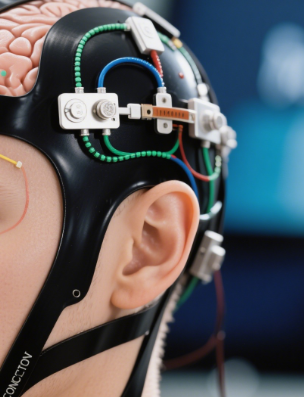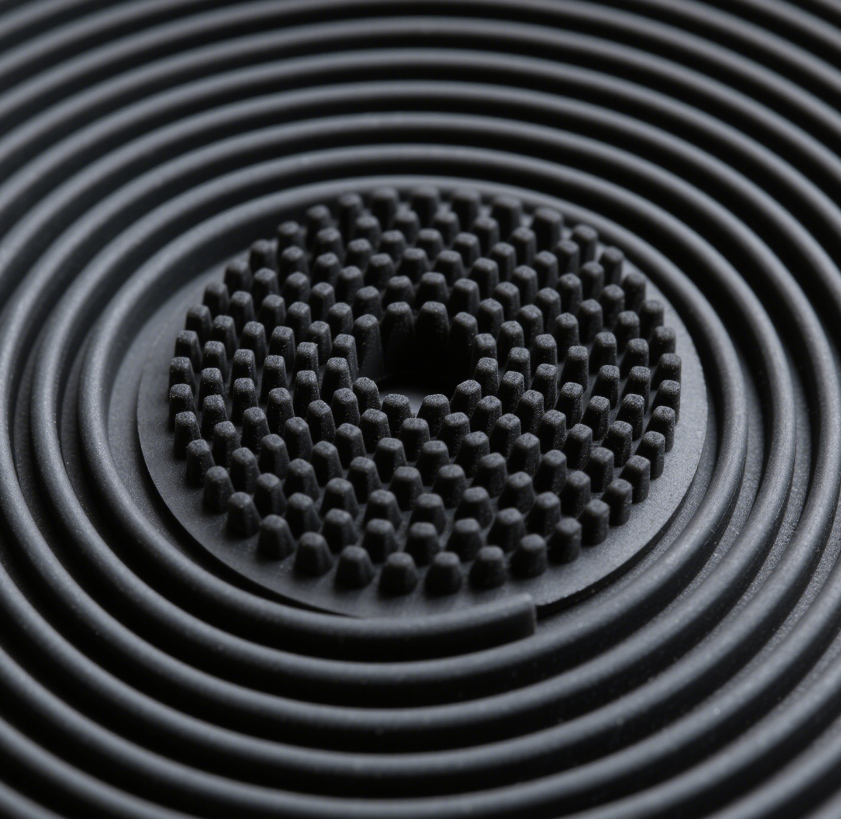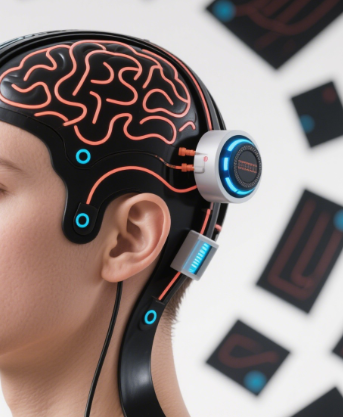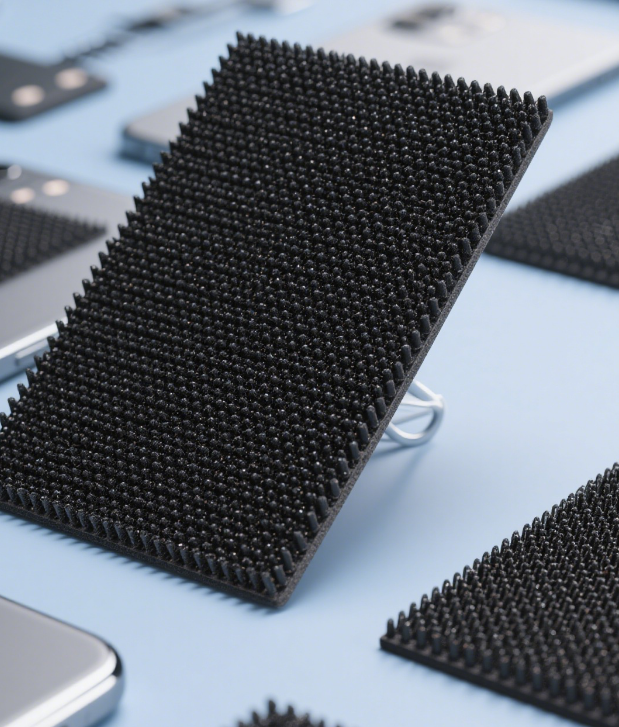Tactile Sensing Conductive Rubber
Tactile sensing conductive rubber is a kind of intelligent material that combines elasticity and conductivity. Its core lies in the conversion of physical signals such as pressure and touch into electrical signals through the deformation of the material. The following is an analysis from aspects such as principles, applications, technological breakthroughs, and challenges: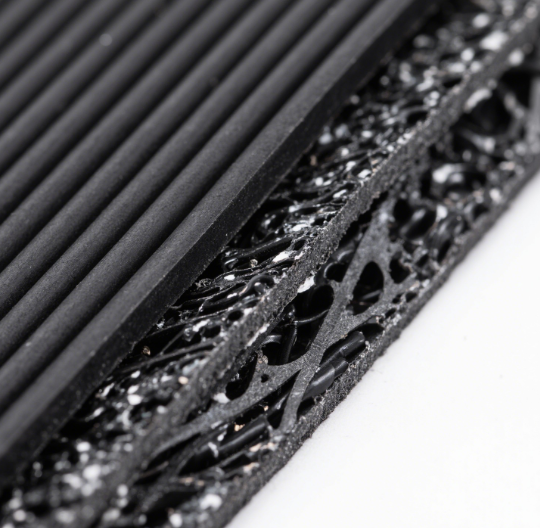
- Working Principles and Material Properties
Conductive rubber is composed of a rubber matrix (such as silicone rubber and nitrile rubber) and conductive fillers (such as carbon black, metal particles, and carbon nanotubes). When external pressure acts on the surface of the material, the contact state between the conductive fillers changes, resulting in a change in the resistance value. This process is called the piezoresistive effect. For example, when the pressure increases, the distance between the conductive particles decreases, the density of the conductive network increases, and the resistance decreases, thus outputting an electrical signal that is proportional to the pressure.
The key parameters of material performance include:
- Sensitivity: The rate of change of resistance corresponding to the change in unit pressure. For example, the sensitivity of a certain flexible sensor can reach 12.39 kPa⁻¹.
· Response time: The time from the application of pressure to the stabilization of the signal, usually in the millisecond range.
· Durability: The stability of the material under long-term cyclic loading. For example, the performance of a certain sensor does not decay significantly after 100,000 cycles.
· Environmental adaptability: Through nano-modification (such as adding SiO₂), the temperature resistance and corrosion resistance can be improved. For example, it can remain stable in the range of – 55℃ to + 170℃.
- Typical Application Scenarios
- Robots and Industrial Automation
Flexible grasping: Soft robots combine conductive rubber with pneumatic drive to achieve object shape perception and adaptive grasping.
· Precision assembly: A certain type of sensor can integrate 100 sensitive units in a 10cm×10cm substrate, which is used for the multi-dimensional force perception of robots. However, the cost is as high as 100,000 yuan per piece.
· Domestic breakthrough: A humanoid robot is equipped with 1,956 self-developed ITPU sensors, achieving a force control accuracy of 0.01N and sub-millimeter deformation perception. - Medical and Health Monitoring
Prosthetic tactile sensation: Conductive rubber sensors can fit the surface of the skin, simulate real tactile sensations, and help amputees regain their sensing function.
· Physiological signal monitoring: Flexible sensors attached to the human body can monitor parameters such as heart rate and blood pressure in real time. For example, a certain medical device uses a conductive rubber film to achieve continuous health data collection. - Smart Wearables and Interaction
Wearable devices: Conductive rubber is used in smart gloves, electronic skin, etc. For example, a fully woven tactile glove developed by a certain company supports 1,152-channel signal collection and is suitable for virtual reality interaction.
· Human-machine interface: Flexible buttons and touchscreens achieve pressure sensing through conductive rubber. For example, a certain mobile phone of Huawei uses conductive rubber to improve the accuracy of touch feedback. - Infrastructure and Environmental Monitoring
Bridge bearing status monitoring: Conductive rubber sensors can be embedded in bridge bearings to monitor the stress distribution under a high pressure of 40MPa in real time, with an error rate of less than 4%.
· Applications in extreme environments: Through multiple cross-linking technologies, it can still maintain stable conductive performance in harsh environments such as ultraviolet rays, acids, and alkalis.
III. Technological Breakthroughs and Frontier Research
- Material Innovation
Nano-fillers: The introduction of nanomaterials such as carbon nanotubes (CNT) and graphene significantly improves the conductive performance. For example, a certain study constructs a three-dimensional conductive network through CNT, making the sensitivity of the sensor reach 35,137 GF.
· Bionic structure: A sensor that mimics the micro-structure of the leaf veins surface can achieve wide-range pressure sensing from 0 to 50kPa, and its sensitivity is three times higher than that of traditional materials. - Manufacturing Processes
Array preparation: High-density sensor arrays are achieved through technologies such as photolithography and 3D printing. For example, a certain flexible sensor integrates 96 sensitive units within a thickness of 1.8mm.
· Self-healing technology: The rubber cross-linked by dynamic covalent bonds can automatically repair its conductive performance after being damaged, extending its service life. - Multimodal Fusion
Multi-parameter sensing of force, heat, and humidity: A certain sensor integrates piezoresistive, temperature-sensitive, and humidity-sensitive materials at the same time to achieve multi-dimensional monitoring of environmental parameters.
· Visual-tactile collaboration: Combining a depth camera with a tactile sensor to achieve dynamic three-dimensional reconstruction of deformable objects, with an error of less than 0.4cm. - Challenges and Future Trends
- Core Challenges
Process consistency: There is still a gap in the uniformity and stability of the array. For example, the performance difference between the array points of a certain domestic sensor reaches 10%.
· Environmental adaptability: Under extreme conditions such as high temperature and high humidity, the conductive rubber may experience performance decay due to oxidation or corrosion. - Future Directions
Material diversification: Develop rubbers based on new conductive fillers such as MXene and liquid metal to further improve sensitivity and weather resistance.
· Intelligent integration: Combine sensors with AI algorithms to achieve real-time analysis and decision-making of tactile signals. For example, identify the material of an object through deep learning.
· Green manufacturing: Use bio-based rubbers (such as natural rubber) and recyclable fillers to reduce the environmental impact.
Conclusion
Tactile sensing conductive rubber, with its flexibility, high sensitivity, and environmental adaptability, has become a core material in fields such as human-machine interaction and robotics. Although it faces challenges in terms of process and cost, it has great innovation potential in multimodal sensing, applications in extreme environments, etc., and is expected to drive the development of the next generation of intelligent devices.













